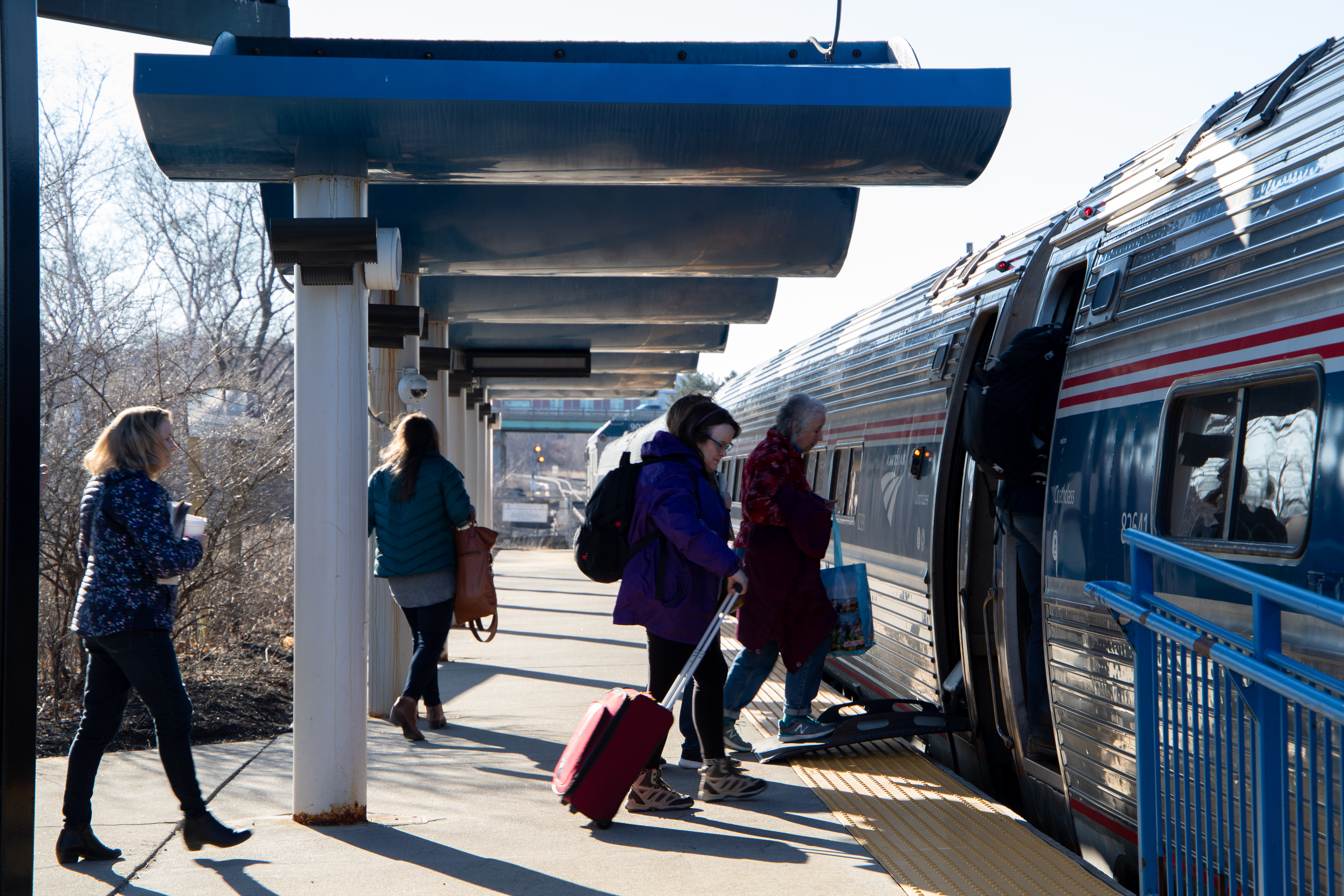By Alyson Peabody, News Editor
A proposed passenger rail between Maine’s two largest cities is financially dependent on guaranteed ridership between Portland and Lewiston/Auburn (L/A)L/A. The rail would offer a connection between USM’s Portland campus to its Lewiston location.
Lewiston’s economic and community development director, Lincoln Jeffer, wonders about the number of daily passengers for the rail service. The cost would need to be offset by guaranteed ridership between Portland and L/A.
Portland was serviced by passenger rails for 125 consecutive years from 1842 to 1967, according to Railroad History of Portland, Maine.
In 2015, the Maine Legislature approved a $500,000 fund to create a passenger rail service between L/A and the Amtrak Downeaster service in Portland. Lewiston and Auburn municipalities gave $50,000 toward the project. The Department of Transportation (MaineDOT) was instructed by the Legislature to work with the project manager, Northern New England Passenger Rail Authority (NNEPRA). The project committee began in 2017 and is made up of nine people that represent NNEPRA, Maine, DOT, and members of L/A. Members include Lincoln Jeffers, Richard Grandmaison, John Myrand, Bettyann Sheats, Jonathan Labonte, Robert Stone, Mary Ann Hayes, and Patricia Quinn.
Auburn Mayor Jason Levesque is open to the idea of the rail service. However, he is unsure if Auburn could afford it, according to The Sun Journal. Rice quoted City Administrator Ed Barrett as saying that L/A has “been working on passenger rail for some time,” and that previous studies “did not take a complete look at the potential economic impact of passenger rail in the area.”
An interest poll of over 100 attendants was conducted in Lewiston back in 2018, according to Rice. Interactive posters asked the public if they were interested in a passenger rail between Portland and L/A. If a person thought the rail was a good idea, they put a yes sticker. If they disagreed, they put a no sticker. By the end of the poll, it was determined that the public was in favor of the service. Some people commented that they would use the passenger rail daily if there were onboard amenities.
According to NNEPRA, the project is made up of two studies: transit propensity to determine ridership and an evaluation of operating services. The 2018 propensity analysis estimates 600 to 800 daily trips in 2025 with a rise to an estimated 700 to 1,900 trips by 2040. This estimate is greater than daily traffic on regional bus routes.
The analysis states that the daily ridership could reach 2,000 daily trips if the region grew in a way that encouraged using the rail between L/A and Portland. Ridership was estimated by evaluating the demographics and travel patterns in the area in comparison to similar rail services across the country.
A one-way ticket is estimated to be between $6 to $10. Rider’s discounts for the elderly and multi-ride passes will be offered. The operating service evaluation included Service Scenarios, such as an assessment of infrastructure expenses and a plan for implementing the service. According to NNEPRA, there are three alignments under consideration that would use one or a combined two rail corridor to connect to the Pan Am Rail Line and the Saint Lawrence and Atlantic Rail (SLR) Line.
Specific sites for stations have not been identified, according to NNEPRA’s 2019 Phase 2 Summary. The stations will likely be in either downtown Lewiston or downtown Auburn, one station at the Maine Turnpike Exit 75 and one station in Portland. Land will be evaluated to determine if it is an ideal station location based on an environmental impact report, land use compatibility, available parking space, and potential future transit oriented development.
NNEPRA’s summary states that funding could come from federal grant programs that have been known to fund approximately 50% to 80% of transit investments. The remaining 20% to 50% could be funded by private, local and state sources.
Andrew Rice of The Sun Journal stated that engineering consultant, Natasha Velickovic from Vanasse Hangen Brustlin (VHB), said the proposed route would cost between $75 and $95 million. The annual operating and maintenance costs would be between $15 million and $20 million.

